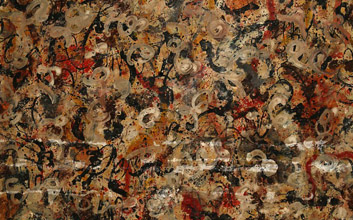What is thought to be a lost Jackson Pollock painting, which was stumbled upon in a garage in Arizona, is set to sell for up to $15 million when it goes to auction later this month.

What is thought to be a long-lost Jackson Pollock painting, which was unearthed in an Arizona garage, is set to sell at auction for $15 million.
Arizona-based art appraiser Josh Levine has spend 18 months and $50,000 investigating the find, and is confident that it’s an original. Recently he told the Arizona Republic, “I’m brave enough to call it a Jackson Pollock and put my entire reputation on it.”
The $50,000 was spent substantiating the claim through forensic analysis and the help of a private investigator.
“It’s one of those things that it’s unbelievable how it all came together,” Josh Levine, founder and CEO of J. Levine Auction & Appraisal, told Money. “I didn’t even believe it myself. I’m just kind of shocked more than anything. And I keep getting more solid information as each day goes by.”
As Creators note, the painting was found along with a trove of mid-20th century abstract artists including a Kenneth Noland piece that has already sold for $110,000. The art was left to its current owner, who has opted to remain anonymous, through the estate of his sister, friend to Peggy Guggenheim and art collector Jenifer Gordon.
Levine said the painting was found when the auction house was called to evaluate a Kobe Bryant signature on a Lakers poster found in a garage. The garage was owned by the brother of Gordon, who was connected to many high-profile New York artists. After she passed away in 1992, Levine said, the painting ended up in the garage, where it has been sitting ever since.

Alongside the private investigator, Levine researched evidence from Guggenheim and spoke with sources close to Greenberg, searching for answers as to how the painting might have ended up in the garage.
Allegedly, the paint is all original and the painting has not been restored. “The dating of the painting to the mid twentieth century is well established as no pigments or binding media introduced in the late 1950s and 1960s have been detected,” forensics expert Peter Paul Biro said in a report.
“The forensic report really just reaffirmed what I already believed to be true based on the provenance,” Levine said. “I’ve spent hundreds of hours researching how this Pollock could end up here in Arizona, and I am confident that this is an original Pollock… there’s no doubt in my mind.”



